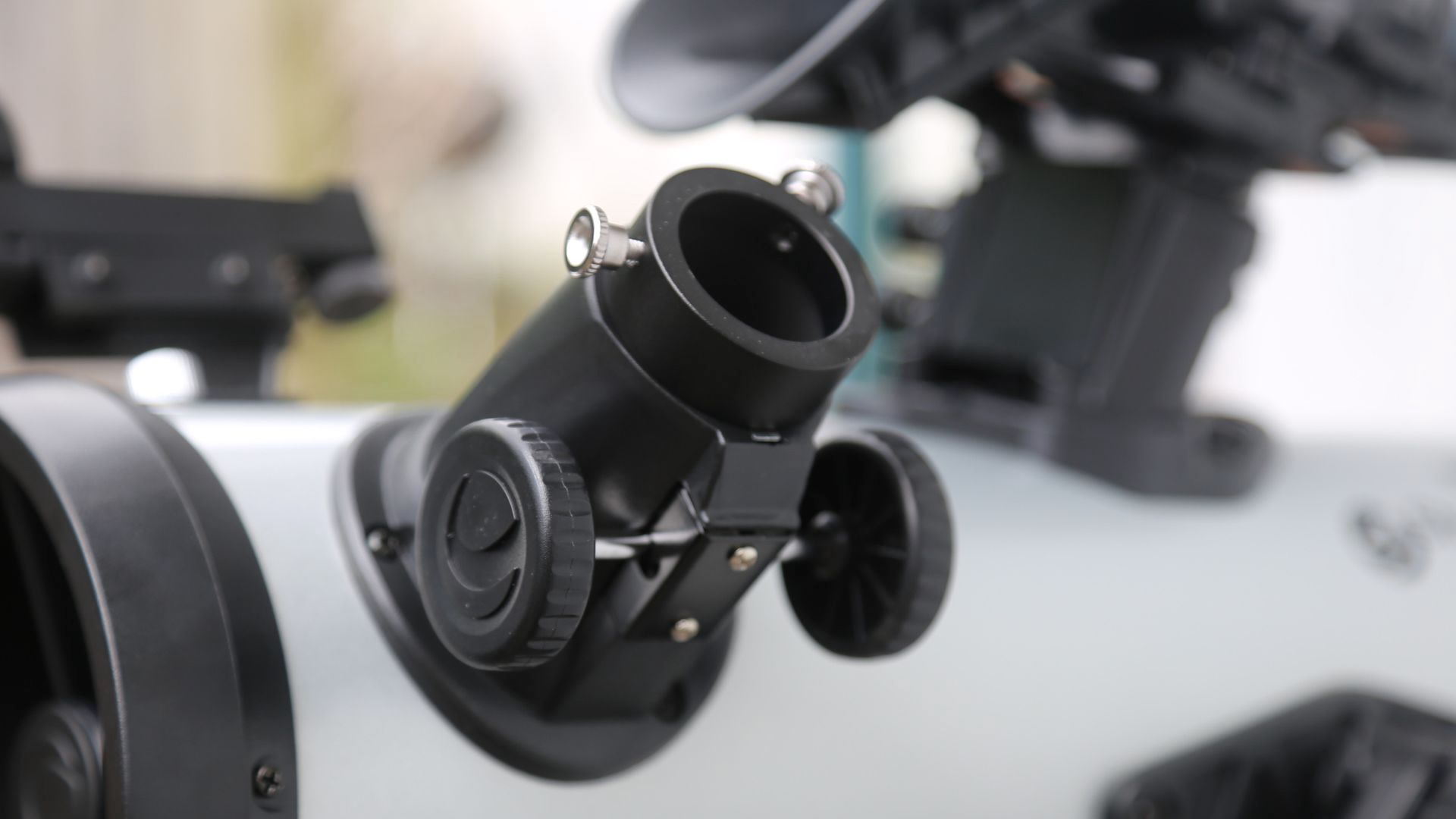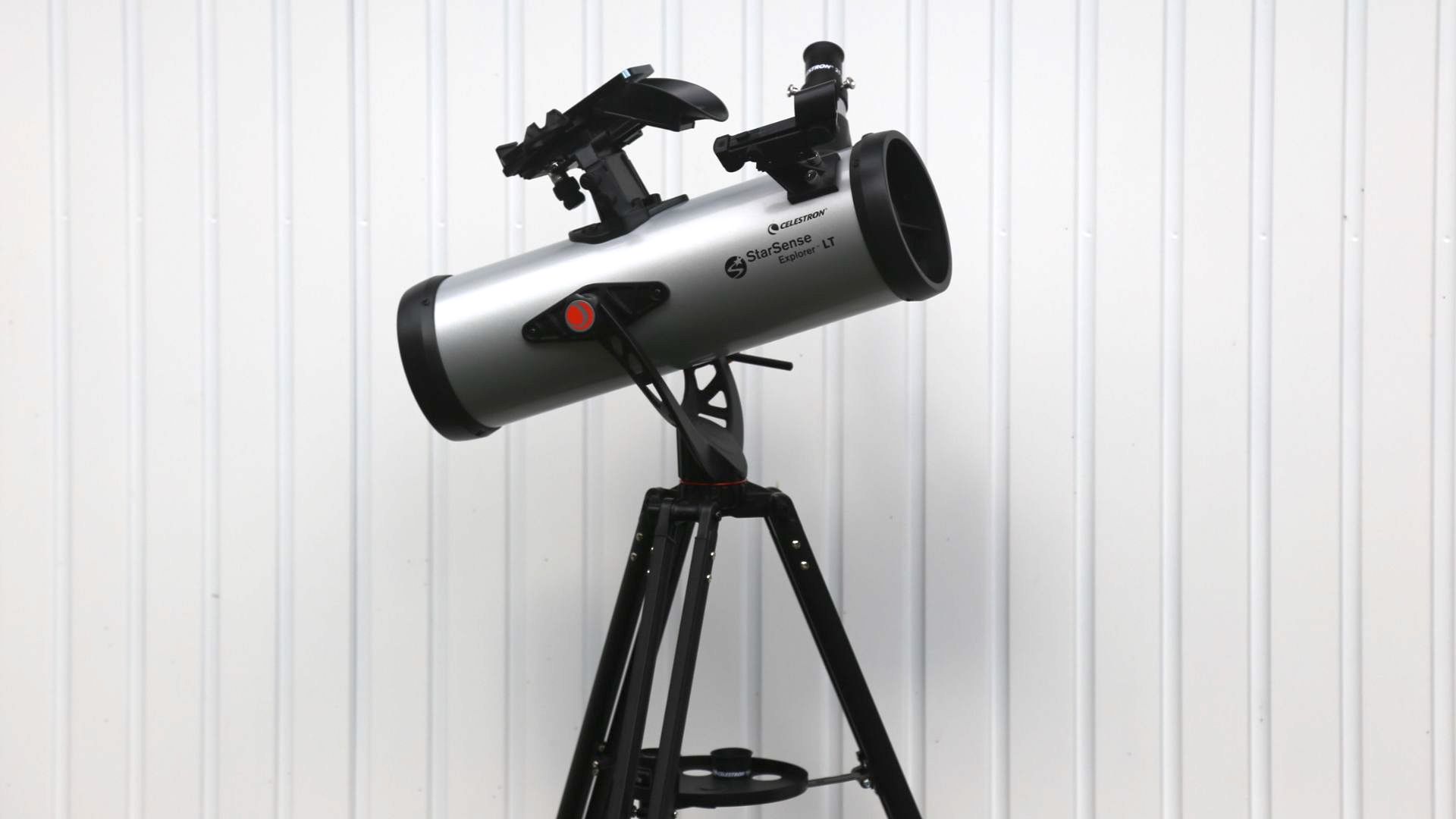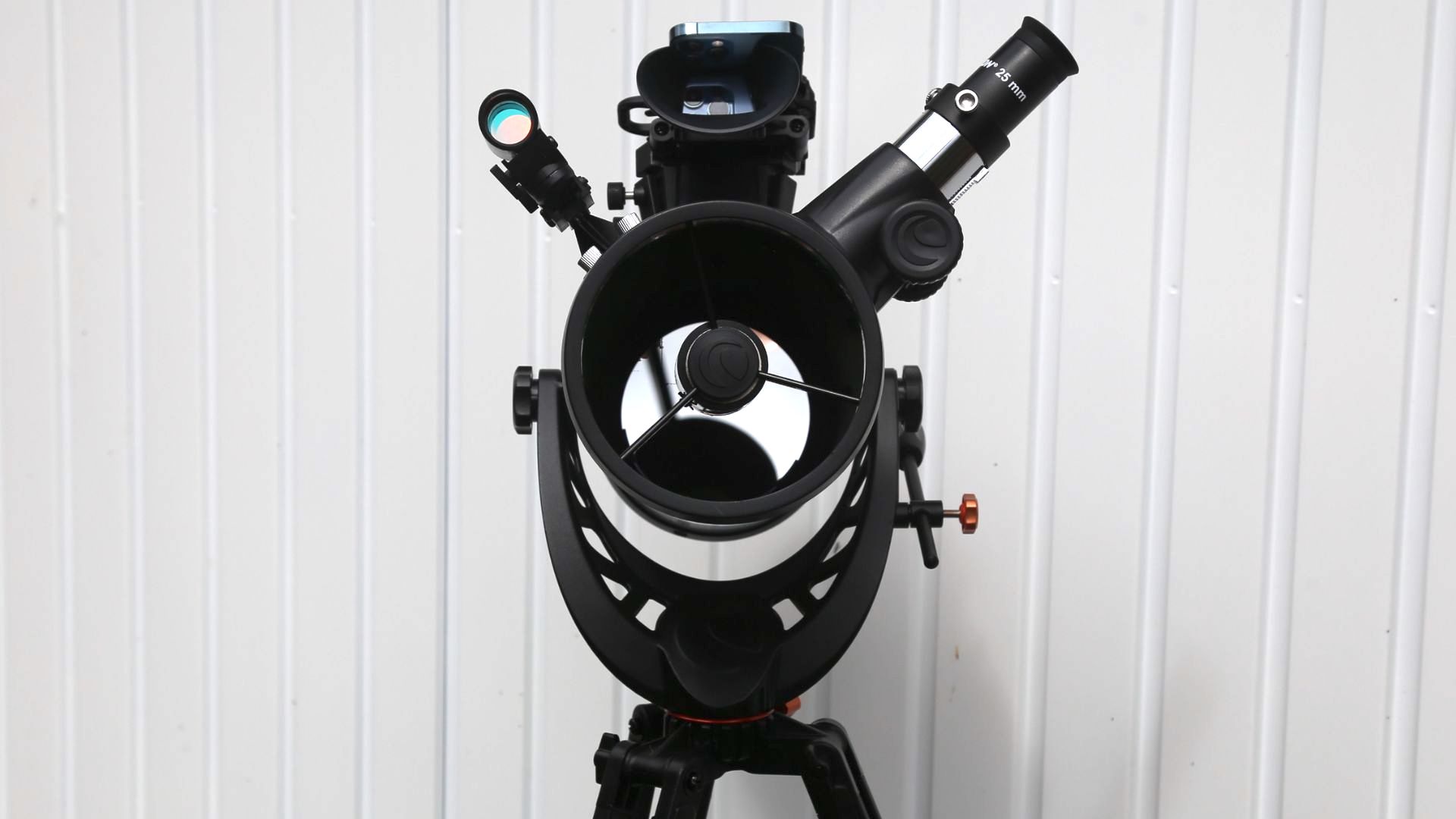Digital Camera World Verdict
Telescopes like the Celestron StarSense Explorer LT 114AZ used to be too heavy. A telescope that isn't easy to move isn't easy to use, but at a mere 6.6 lbs/2.99 kg it’s easy to pick up and move the StarSense Explorer LT 114AZ – and its tripod – in one hand. Is that a good thing? If a telescope has been designed to travel, yes it is, but this affordable Newtonian reflector is actually best left at home. That’s despite it coming with one of the most impressive automatic ‘go-to’ systems we’ve yet come across.
Pros
- +
Amazing StarSense app
- +
Affordable
- +
Simple to assemble
- +
2x Barlow Lens
Cons
- -
Poor red dot finder
- -
Struggles with deep sky
- -
Lightweight design
- -
Lacks precision
Why you can trust Digital Camera World
The key reason to buy the StarSense Explorer LT 114AZ is to get your hands on its impeccable StarSense app-driven goodies. Comprising a StarSense Explorer universal smartphone dock that physically attaches to a computer and the StarSense app for smartphones, this ‘go-to’ system is immense. Once you've entered the code supplied in the box into the app all you do is place your smartphone in the dock. Select an object from the app's vast database and arrows will be presented on the screen to direct you to that object. You have to move the telescope manually – this is not a motorized telescope – but it's incredibly easy to do.

StarSense may be amazing, but it's also worth considering the optics inside the StarSense Explorer LT 114AZ. A Newtonian reflector with a 4.5”/114mm aperture, it comes with 1in/25 mm and a 0.4in/10 mm Kellner eyepieces as well as a 2x Barlow lens, which doubles the magnification to 200x. It also comes with an aluminum tripod fitted with vibration suppression pads.
Specifications

Optical design: Newtonian reflector
Aperture: 4.5”/114mm
Focal length: 39.3”/1000mm
Focal ratio: f/9
Eyepiece focal length: 1”/25 mm (40x) and 0.4”/10 mm (100x)
Total kit weight: 6.6 lbs/2.99 kg
Mount type: manual altazimuth
Celestron StarSense Explorer LT 114AZ: performance

The StarSense Explorer LT 114AZ is designed for high magnification on bright objects in the night sky. Despite that app being very easy to use it’s difficult to actually get targets into the field of view of the StarSense Explorer LT 114AZ. As well as being slightly difficult to move left and right – the whole thing lacks fluidity – its bearing suffers from overreach and recoil, which makes it difficult to get an object into the field of view of the optics. It lacks slow motion hand controls of sufficient quality to cure this. The LT 114AZ is also just too light. It lacks stability – thanks to a flimsy tripod – and its imprecise focuser adds to the wobbles.
When we did eventually get eyes-on with Jupiter the StarSense Explorer LT 114AZ showed a very bright image that was affected somewhat by chromatic aberration. The resulting thick purple line around the giant planet’s bright disc also extended to three of its moons in orbit. It was less of a problem with dimmer Saturn and we did manage to get a great view of the ringed planet using the 2x Barlow lens in the box. The StarSense Explorer LT 114AZ’s high focal ratio and low aperture mean that deep sky objects do lack brightness and contrast.
Celestron StarSense Explorer LT 114AZ: verdict

The Celestron StarSense Explorer LT 114AZ is the most affordable and most basic telescope in Celestron’s StarSense range, but it lacks versatility. StarSense is incredible and it puts in a respectable performance with the moon and planets, but there’s little else to like here. Despite StarSense making targets easy to find, the Celestron StarSense Explorer LT 114AZ’s basic build quality makes it difficult to point while its high focal ratio and low aperture ensure that deep sky objects lack brightness and contrast.
Read more:
• Astrophotography: How-to guides, tips and videos
• Astrophotography tools: the best camera, lenses and gear
• The best lenses for astrophotography
• The best star tracker camera mounts
• Best equatorial mounts
• Best deep-space telescopes
• The best light pollution filters
• The best CCD cameras for astrophotography
• The best spotting scopes
• The best binoculars
• The best microscopes

Jamie has been writing about photography, astronomy, astro-tourism and astrophotography for over 15 years, producing content for Forbes, Space.com, Live Science, Techradar, T3, BBC Wildlife, Science Focus, Sky & Telescope, BBC Sky At Night, South China Morning Post, The Guardian, The Telegraph and Travel+Leisure.
As the editor for When Is The Next Eclipse, he has a wealth of experience, expertise and enthusiasm for astrophotography, from capturing the moon and meteor showers to solar and lunar eclipses.
He also brings a great deal of knowledge on action cameras, 360 cameras, AI cameras, camera backpacks, telescopes, gimbals, tripods and all manner of photography equipment.

